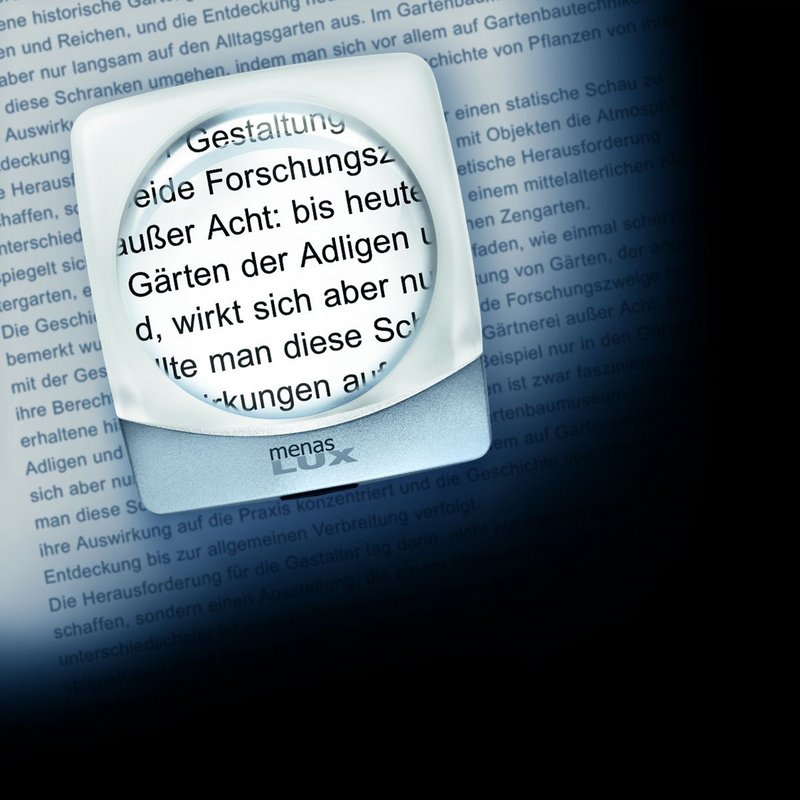What is presbyopia?
As we age, our physical strength decreases. This also applies to the eyes. Our eyesight is at its very best when we are young. As we age, our visual acuity deteriorates progressively as the elasticity of the eye lens decreases. However, this only becomes noticeable from the age of around 40: small print and details become increasingly difficult to read. People in this age group often find they have to hold books, newspapers and magazines further away to be able to read text.

How presbyopia occurs
A young eye lens is very elastic and is therefore able to change shape easily. This allows us to focus the eyes on both near and distant objects, and enables us to see clearly. This ability is also called accommodation. As this deteriorates, the so-called near point becomes increasingly further away - the near point is the closest point at which an object can be brought into focus by the eye.
How can presbyopia be treated?
As the accommodation ability of the eye is different for everyone, from the age of 40 it is advisable to have your eyes regularly checked by a specialist. Initially, reading glasses can correct this problem very effectively. However, special magnifiers - some equipped with powerful illumination - can make everyday life so much easier for those suffering from presbyopia and can help them to maintain their usual quality of life.
Find an optician in your area.

Why is an illuminated magnifier extremely helpful?
As we age, the light requirement of our eyes increases. For example, in order to experience the same impression of brightness, a person who is 60 years of age requires around 15 times as much light as a 10-year-old child. This usually means that reading glasses are no longer adequate for reading small print or details, particularly for the 50+ generation. We therefore recommend that you use magnifiers with powerful illumination, especially in poor light conditions. Eschenbach Optik offers a wide selection of magnifying vision aids for a variety of vision tasks.